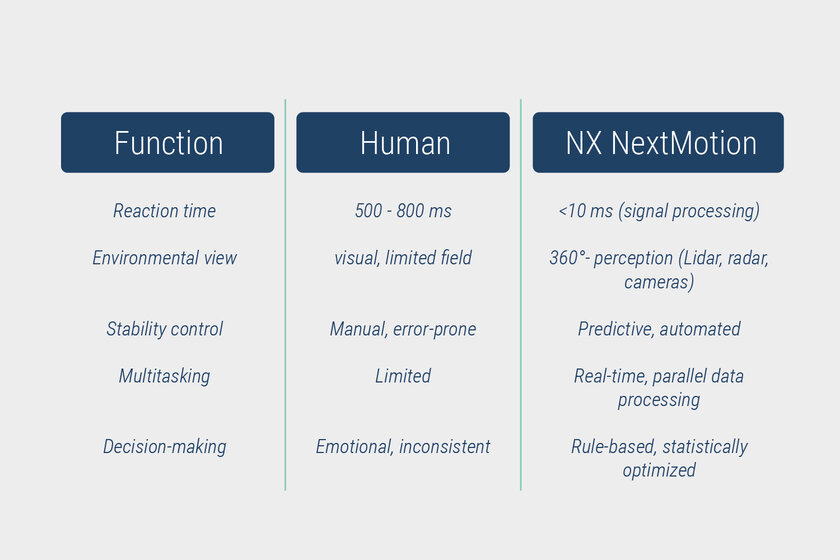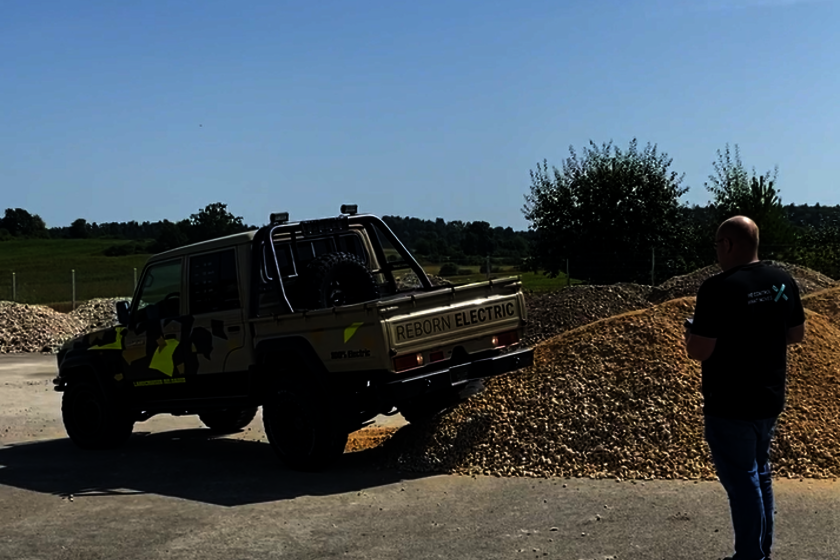
Why Drive-by-Wire Acts Safer Than a Human Driver
Trust Is Good. Redundancy Is Better.
Humans are fallible – fatigue, distraction, emotions, or slow reflexes can lead to mistakes. Drive-by-Wire systems like NX NextMotion operate differently: with mathematical precision, real-time data analysis, and full redundancy. They don’t just react – they prevent failure before it happens.
Human vs. Machine – A Data-Driven Comparison
| Function | Human | NX NextMotion |
| Reaction time | ~500-800 ms | <10 ms (signal processing) |
| Environmental view | Visual, limited field | 360° perception (LiDAR, radar, cameras) |
| Stability control | Manual, error-prone | Predictive, automated |
| Multitasking | Limited | Real-time, parallel data processing |
| Decision-making | Emotional, inconsistent | Rule-based, statistically optimized |
Bottom line: NX reacts faster, sees more, and responds more precisely – even in the dark, under stress, or during partial system failures.
Fail-Operational, Not “Limp Mode”
NX NextMotion’s safety architecture – as outlined in Episode 3 – proves its value when milliseconds matter: on ice, during actuator faults, or in power failures. What matters isn’t just the hardware, but the system’s intelligence: NX detects, isolates, and compensates for faults – with no loss of control.
What Happens in Critical Moments?
On black ice, aquaplaning, or during a sudden obstacle – a human might panic, skid, or overreact. NX calculates traction loss, adjusts steering and brake vectors – and executes the maneuver in milliseconds. Often before danger is even perceived.
Conclusion: A New Definition of Vehicle Safety
Drive-by-Wire doesn’t mean less control – it means ultimate control. Especially when lives are on the line. Arnold NextG isn’t building demos. We build systems you can trust with your life.






